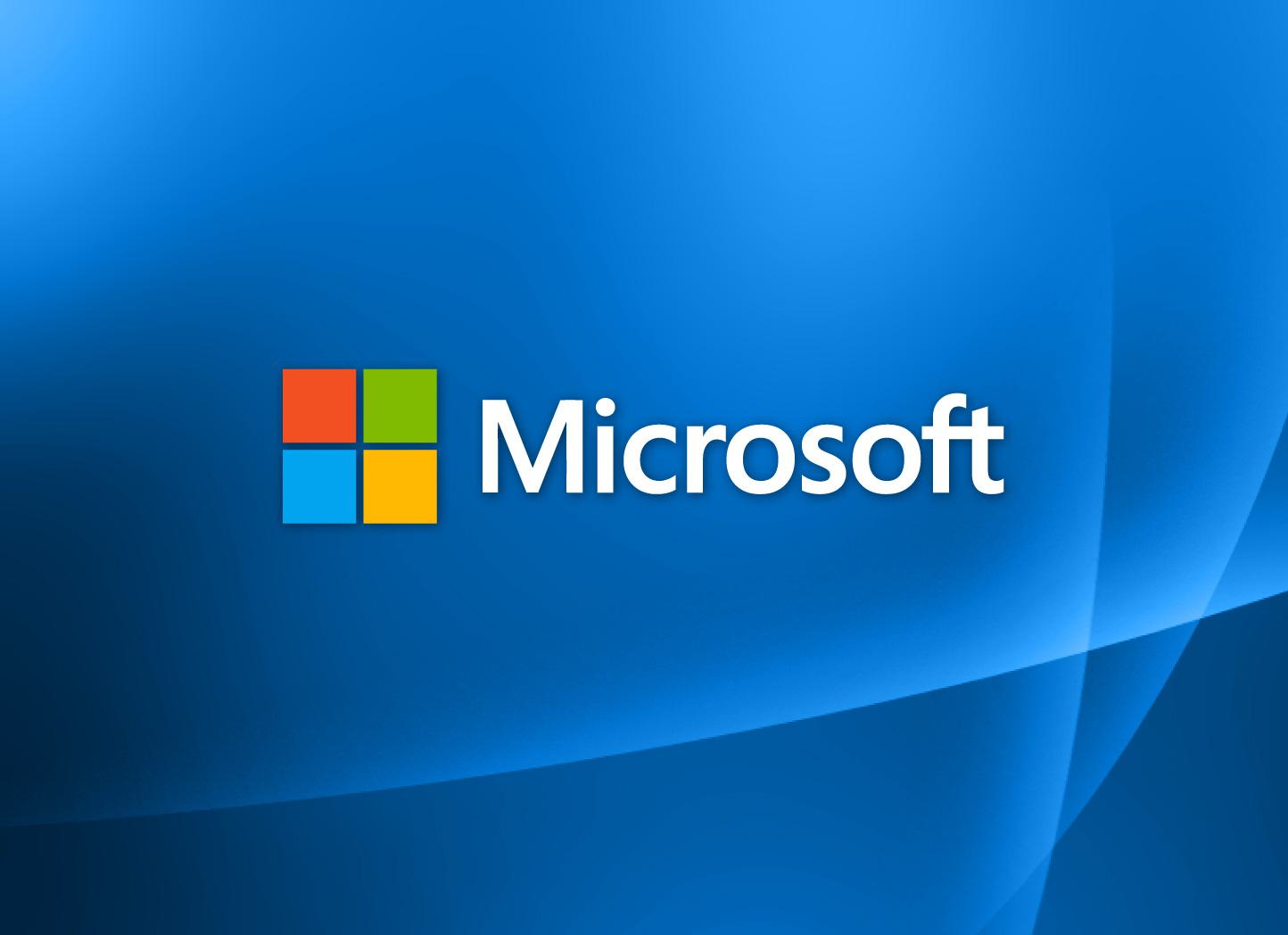History of the Microsoft Logo

Since 1975, Microsoft has built itself into the most prolific software company in the world. As creators of the ubiquitous Windows operating system and its suite of Office applications, the company has formed a consistent and critical part of how people manage their content and run their businesses, leading to exponential success and a striking evolution of their brand.

The company’s first logo was created by none other than Bill Gates and cofounder Paul Allen. The partners would use a programming language to generate their first corporate logo. Concentric lines and rounded edges form an all caps wordmark influenced by a disco aesthetic - timely for its era but ultimately destined for change.
1980: A Radical Rebrand
It’s a new decade and Microsoft has formed a lucrative partnership with IBM, becoming increasingly popular among a new generation of computer hobbyists and programmers. In an effort to remain visually relevant and appeal to this emerging market, a brand new logo with a decidedly bold look is created.

With it sharp edges, diagonal lines and exaggerated stems on the letters M, R and F, one could be forgiven for believing that the company was making heavy metal records as opposed to software. While many people did approve the new look, this logo would last for only 2 years. From this point onward, Microsoft would use more classic typography.
1982: Birth of the “Blibbet”
Seeking a more modern image suitable for mass consumption, the wordmark is distilled into a solid, geometric sans-serif font. The letter “O” is carved from a series of parallel lines - an icon which is nicknamed the “blibbet” by employees. This logo would become the face of Microsoft’s flagship Windows operating system.

The blibbet would also serve as a standalone logo, used as a watermark on company stationery and becoming a cult phenomenon among employees and alumni. According to lead engineer Larry Osterman, there was even a Blibbet Burger which was served on Microsoft’s campus, along with a campaign spearheaded by employee (and current CTO) Dave Norris to “Save the Blibbet” when a new logo was proposed in 1987.

Despite its popularity and brand loyalty amongst insiders, the blibbet would become a small, yet quaint footnote in the company’s branding history.
1987: The “Pac Man” Logo
The 80s are drawing to a close and Windows has become a global force. In-house designer Scott Baker is tasked with an ambitious rebranding effort to represent a new era in computing and a rapid shift in the company’s goals and vision. In his own words, Scott sheds some light on his inspiration:
“The former logo (the ‘Blibbet’) was more in keeping with how we saw our company five years ago. The new logo, in Helvetica italic typeface, has a slash between the “o” and “s” to emphasize the “soft” part of the name and convey motion and speed.”

The use of a much bolder, title-cased wordmark represented the most notable departure from previous logos. Due to the triangular sliver carved from its side, employees would affectionately dub this as the “Pac Man Logo”. It would become Microsoft’s most widespread and enduring brand, enjoying a 25-year run whose only updates included the addition of several taglines in 2006 and 2011.
 ## 2012: The Brand that Windows Built
## 2012: The Brand that Windows Built
On August 23, 2012 a much anticipated new brand was launched. Rather than hire a firm or tap in-house designers, this logo was the result of a collective brainstorming amongst many employees. According to Microsoft:
“The brand should evolve to visually accentuate this new beginning, as the company prepares for the launch of its new products. The logo takes its inspiration from our product design principles while drawing upon the heritage of our brand value, fonts and colors.”

Most notable here is the use of colors in the famous four-box icon, which represented the success of Windows along with its color-coded suite of Office applications - red for Powerpoint, green for Excel, blue for Word and yellow for Outlook. This is also the first time that Microsoft uses its own typeface, Segoe UI, created by designer Steve Matteson. Not only is this font used for all marketing and design materials but within the operating system and software for both desktop and mobile platforms.
Conclusion
From its origins as a cutting edge tool for developers, to widespread use as a household name, Microsoft has come a long way in its evolution. This is visually reflected in a branding strategy built around the company’s willingness to embrace change and stick to what works when a winning formula is created.
Fine Print Art is an educational independent research publication. The above content has not been officially sponsored by Microsoft Corporation.
How FinePrintArt.com Maintains Its Ad-Free Creative Platform
FinePrintArt.com is a unique platform developed and maintained by Fine Print New York, experts in the restoration of antique, rare & damaged wallpapers. This collaboration allows this website to offer insightful, ad-free content on creative artists and the evolution of visual branding. Fine Print's expertise in restoring vintage designs directly informs the rich, well-researched articles found here, showcasing our commitment to both historical preservation and contemporary artistic exploration.
Meet the Founders: The Creative Minds Behind Our Platform
Joseph Gornail a distinguished printer/photographer and the visionary behind Fine Print New York, hails from SoHo, Manhattan. Rooted in a family tradition of NYC printing, Joseph mastered the craft as a teenager. His significant impact on the New York printing industry ignited in 1996 with Dolo Records/Stretch Armstrong. He founded All City Marketing & Printing in the late '90s and co-created the iconic streetwear label Orchard Street with partners Benjamin Holloway and Greig Bennett in 1999. In 2004, Joseph launched Fine Print NYC, establishing it as a leading commercial printing firm. The company debuted with a landmark project for Nike, epitomizing innovation and resilience in the modern digital landscape.
Steven Garcia a prominent designer/illustrator and creative director at Fine Print, originates from Bushwick, Brooklyn. A graduate of Fashion Industries High School and the Fashion Institute of Technology (F.I.T.), Steven has carved a notable path in the design world. His early career highlights include a role as a sought-after professional retoucher and storyboard artist at Saatchi & Saatchi in 1996. Embracing his entrepreneurial side, Steven founded ShinyDesign in 1998, which later became a key design partner for Fine Print NYC in 2004. His extensive portfolio features collaborations with elite brands such as Snapple, The Waldorf Astoria, Netflix and Sony, cementing his status as a key influencer in New York's vibrant advertising & design industry.
